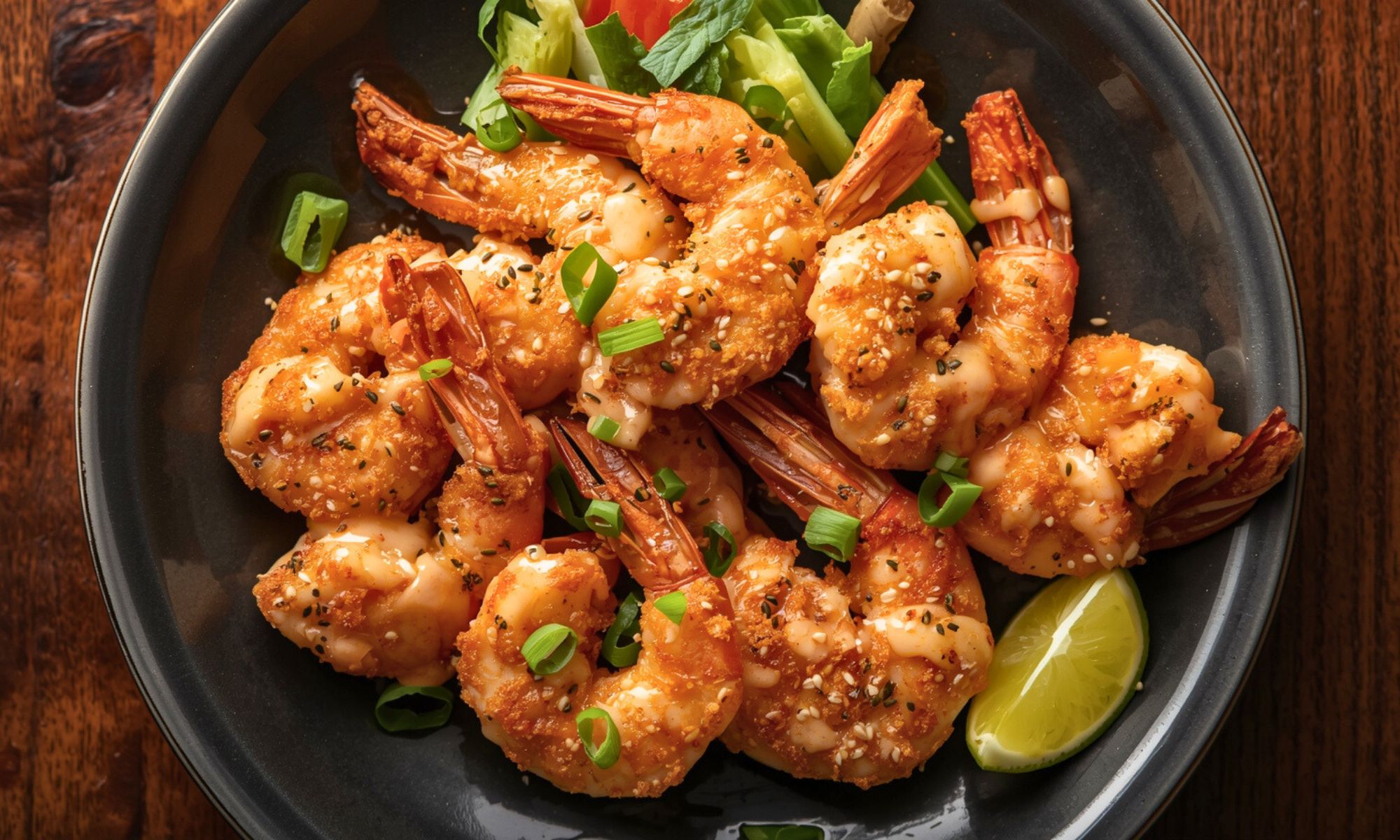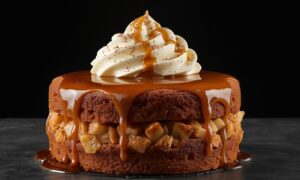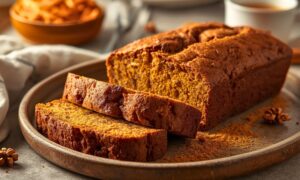The courthouse lights were still glowing when I finally walked out, files tucked under one arm and exhaustion trailing close behind. Takeout menus flashed through my mind, but I craved something bold, quick, and comforting. That’s when this Trendy Firecracker Shrimp recipe became my rescue plan.
I dropped my bag, kicked off my shoes, and faced a fridge that looked more like a challenge than dinner. Shrimp in the freezer, chili sauce in the back, garlic rolling in the drawer, and a lime waiting for its moment. Not much, but enough to spark an idea.
The skillet snapped to life with butter sizzling and garlic hissing. Shrimp curled fast, soaking up that fiery, sweet, tangy sauce until the kitchen smelled like I’d staged my own victory feast. One bite, sharp, bold, and addictive, was all it took to remind me why homemade beats takeout every time.
And now I’m passing it to you. I’ll walk you through the easy steps, quick swaps, and serving tricks that make this recipe shine. Trust me, once you taste it, Firecracker Shrimp won’t just be dinner, it’ll be your weeknight ritual.
Why This Recipe Rules Your Kitchen
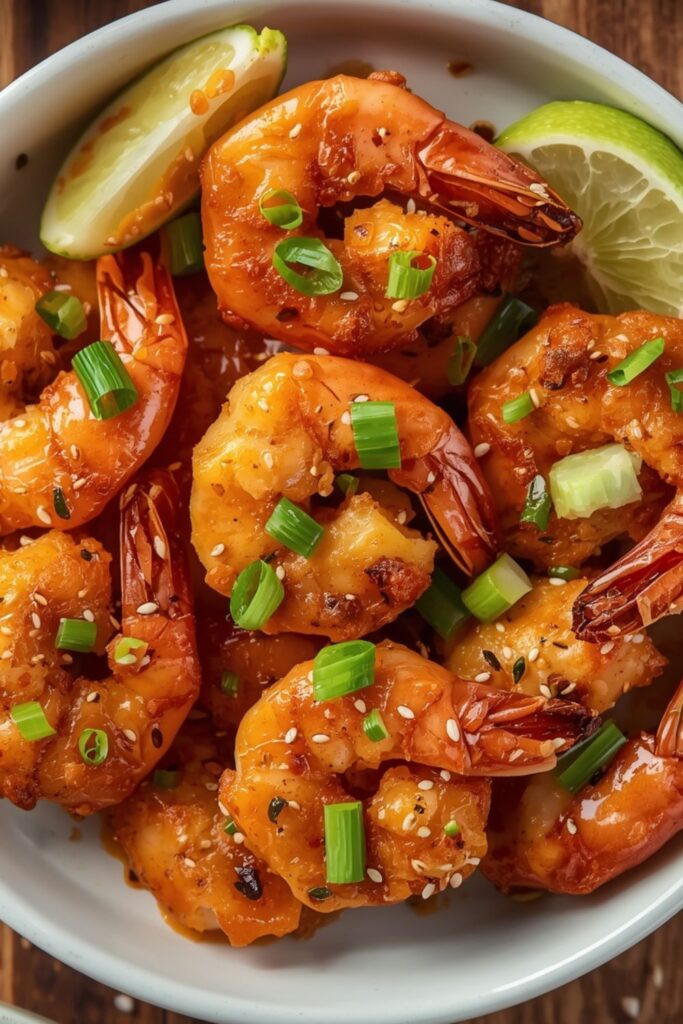
Let me tell you what makes this different. Most firecracker shrimp recipes are basically fried shrimp with sweet sauce. Fine, but boring. This version has depth.
The coating isn’t just flour and eggs. We’re building layers of flavor right from the start. Cornstarch creates that extra crispy texture. Spices in the breading add complexity before the sauce even hits.
Then there’s the sauce situation. Store bought sweet chili sauce works fine. But when you doctor it up? Game changer. A splash of rice vinegar brightens everything. Garlic powder adds savory depth. Fresh lime juice makes it pop.
The cooking method matters too. High heat, quick sear. Gets that golden crust without overcooking the shrimp. Nobody wants rubbery shrimp at their party.
This recipe also scales beautifully. Making it for two? Easy. Feeding a crowd of twenty? Just multiply and cook in batches. The sauce keeps perfectly warm while you work.
Ingredients for Perfect Trendy Firecracker Shrimp
Here’s everything you need, in the order you’ll actually use it:
For the Shrimp:
- 1½ pounds large shrimp, peeled and deveined
- 1 cup cornstarch
- ½ cup all purpose flour
- 2 large eggs, beaten
- 1 teaspoon garlic powder
- 1 teaspoon onion powder
- ½ teaspoon paprika
- Salt and pepper to taste
- Vegetable oil for frying
For the Firecracker Sauce:
- ¾ cup sweet chili sauce
- 3 tablespoons sriracha (adjust to taste)
- 2 tablespoons rice vinegar
- 1 tablespoon soy sauce
- 1 teaspoon garlic powder
- Juice of 1 lime
- 2 green onions, sliced thin
Smart Swaps That Actually Work
Can’t find sweet chili sauce? Make your own. Mix equal parts honey and ketchup. Add rice vinegar and red pepper flakes. Not exactly the same, but close enough.
Sriracha too spicy? Try gochujang for different heat. Or just use less and add more later. You can always make it spicier. Going backwards is harder.
No cornstarch? All flour works fine. Your coating just won’t be quite as crispy. Still delicious though.
Large shrimp cost too much? Medium works great. Just watch your cooking time. They’ll be done faster than you think.
Vegetable oil not your thing? Peanut oil handles high heat beautifully. Avocado oil works too. Just avoid olive oil, it’ll burn and taste bitter.
The Secret to Ingredient Success
Here’s what separates good firecracker shrimp from great. Fresh matters, but smart shopping matters more.
Buy shrimp that smells like the ocean, not fishy. If it’s frozen, thaw it properly. Cold water bath for twenty minutes. Rush it and you’ll get tough, unevenly cooked shrimp.
Pat everything completely dry before coating. Water and hot oil don’t play nice together. Plus, wet shrimp won’t hold the breading properly.
Room temperature eggs coat more evenly. Pull them out thirty minutes before cooking. Cold eggs make clumpy batter.
Fresh lime juice beats bottled every time. The brightness is incomparable. But hey, bottled works if that’s what you’ve got.
Step by Step Magic: Making It Perfect
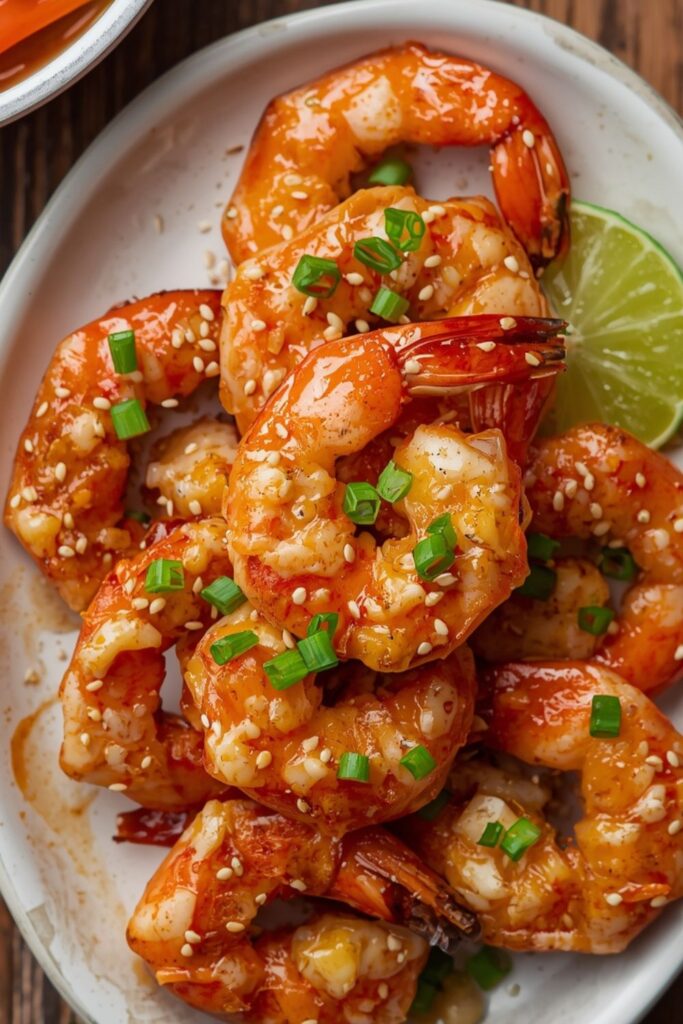
Step 1: Get Your Station Ready
Set up three bowls. Cornstarch mixture in one. Beaten eggs in another. Nothing in the third yet, that’s for your finished shrimp.
Heat your oil to 350°F. No thermometer? Drop a bit of breading in. It should sizzle immediately but not violently. Too hot and your coating burns before the shrimp cooks.
Mix your sauce ingredients in a large bowl. Taste it. Adjust as needed. Too sweet? More sriracha. Too spicy? More sweet chili sauce. Make it yours.
Step 2: The Coating Dance
This is where patience pays off. Each shrimp gets the full treatment. Cornstarch mixture first. Shake off excess. Then egg wash. Let extra drip off.
Don’t crowd your coating station. Work with five or six shrimp at a time. Rushing leads to messy breading and frustration.
Here’s a pro tip: use one hand for dry ingredients, one for wet. Keeps your fingers from turning into breaded clubs. Trust me on this one.
Step 3: The Sizzle
Drop shrimp into hot oil carefully. Away from you, not toward you. Hot oil hurts when it splatters.
Don’t overcrowd the pan. Give each piece space to breathe. Overcrowding drops the oil temperature. That means greasy, soggy coating.
Two to three minutes per side. You want golden brown perfection. Not pale, not burnt. Golden like a perfect sunset.
Watch for the bubbling to calm down. That’s your signal they’re nearly done. The moisture is cooked out and the coating’s set.
Step 4: The Grand Finale
Drain cooked shrimp on paper towels for thirty seconds. Just long enough to lose excess oil. Not long enough to get cold.
Immediately toss hot shrimp in your prepared sauce. The heat helps the sauce cling better. Creates that glossy, irresistible coating.
Garnish with sliced green onions and serve right away. This dish is meant to be eaten hot and fresh.
Common Pitfalls (And How to Dodge Them)
Oil too hot? Your coating burns before the shrimp cooks. Lower the heat and wait. Patience beats speed every time.
Oil not hot enough? Greasy, soggy results. Nobody wants that. Get it properly heated before you start.
Overcrowding the pan drops oil temperature fast. Work in batches. Your first batch shouldn’t be perfect while your third is terrible.
Sauce too thin? It won’t stick properly. Let it sit for a few minutes. The flavors meld and it thickens slightly.
Shrimp overcooked? They turn rubbery and sad. Large shrimp need maybe four minutes total. Medium shrimp even less.
The Science Behind the Sizzle
Here’s why this method works so beautifully. Cornstarch creates a lighter, crispier coating than flour alone. It doesn’t absorb as much oil either.
The high heat creates what’s called the Maillard reaction. That’s where the golden color and complex flavors develop. Low heat just steams everything. High heat creates magic.
Double coating (cornstarch then egg) builds texture layers. Each one serves a purpose. The cornstarch base crisps up. The egg layer helps everything stick together.
Tossing hot shrimp in sauce creates better adhesion. Heat opens up the coating slightly. Lets the sauce penetrate and cling. Cold shrimp just get messy.
Rice vinegar in the sauce cuts through richness. Balances all that sweet and spicy with bright acidity. Makes each bite cleaner and more craveable.
Tool Talk: What Really Matters
A good thermometer eliminates guesswork. Oil temperature matters more than most people realize. Get it right and everything else falls into place.
Heavy bottomed pot maintains steady heat. Thin pans have hot spots. Hot spots mean uneven cooking. Nobody wants that.
Spider strainer or slotted spoon lifts food cleanly. Leaves oil behind where it belongs. Makes the whole process neater and safer.
Large bowl for tossing with sauce. You need room to coat everything evenly. Cramped quarters lead to uneven coverage.
Paper towels or cooling rack for draining. Gets excess oil off without making things soggy. Sets you up for sauce success.
Making It Beautiful and Delicious
Presentation starts with proper cooking. Golden, evenly cooked shrimp look amazing already. Don’t mess with perfection.
Garnish simply but thoughtfully. Those green onion slices add color contrast. Sesame seeds would be nice too. Maybe a lime wedge on the side.
Serve on a warmed platter. Keeps everything at perfect eating temperature longer. Shows you care about the details.
For photos, natural light beats flash every time. The golden coating catches light beautifully. Makes people hungry just looking at it.
Perfect Pairings
This shrimp begs for crisp, cold beer. The bubbles cut through richness perfectly. IPA works if you like hoppy contrast. Lager if you prefer clean simplicity.
Rice absorbs extra sauce beautifully. Jasmine rice especially. The fragrance complements the Asian inspired flavors.
Simple salad with cucumber and herbs refreshes the palate. Keeps things from getting too heavy. Balances all that sweet and spicy.
Coconut rice takes this tropical. The subtle sweetness plays beautifully with the firecracker sauce. Worth trying at least once.
Creative Variations to Try
Want more heat? Add diced jalapeños to the sauce. Or use ghost pepper sriracha if you’re feeling brave. Start small, you can always add more.
Pineapple chunks in the sauce create sweet tart complexity. Dice them small so they distribute evenly. Fresh beats canned here.
Honey instead of sweet chili sauce changes the whole personality. Still delicious, just different. More like honey garlic shrimp’s spicy cousin.
Coconut flakes in the coating add tropical vibes. Toast them first for better flavor and color. Just a handful makes a difference.
Wrapping It Up: Your New Favorite Recipe
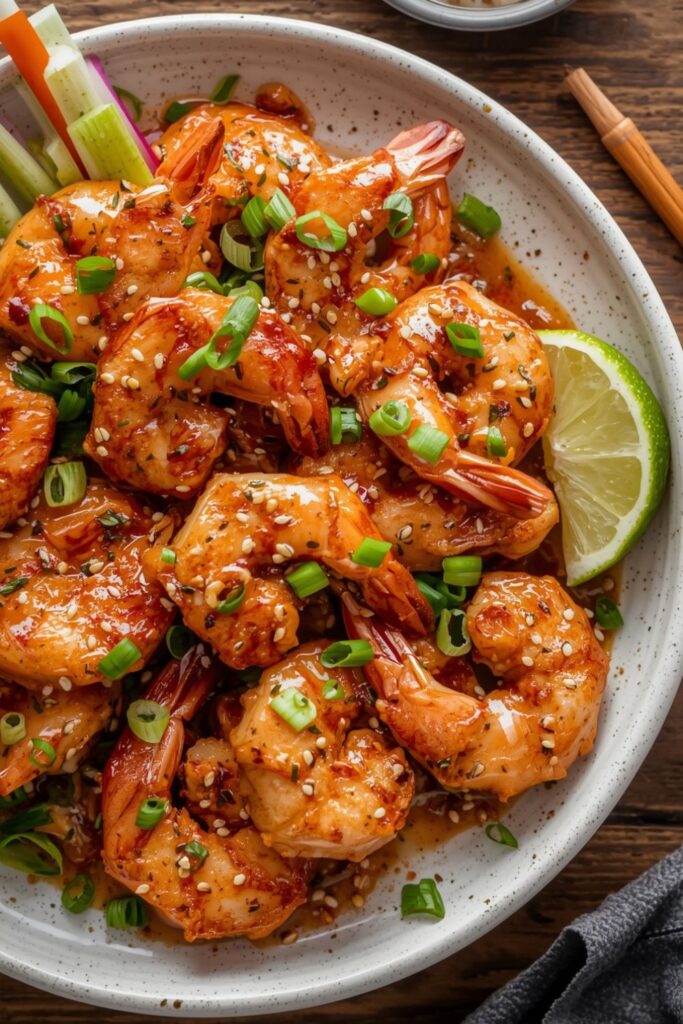
This Trendy Firecracker Shrimp delivers everything you want in a crowd pleaser. Easy enough for weeknight dinners. Impressive enough for special occasions.
The combination of crispy coating and addictive sauce hits every pleasure center. Sweet, spicy, crunchy, tender, all in perfect balance.
Make it once and you’ll understand the hype. Make it twice and you’ll have the technique down. Make it three times and people will start requesting it.
Here’s my final advice: trust the process. Don’t rush the oil heating. Don’t skimp on the sauce tasting. Don’t skip the green onion garnish.
Most importantly, make it your own. Like more heat? Add it. Prefer sweeter? Adjust accordingly. The best recipes are the ones that make you happy.
This recipe has become my go to for everything. Unexpected guests? Firecracker shrimp. Potluck contribution? Firecracker shrimp. Tuesday night and nothing planned? You know what I’m making.
Frequently Asked Questions
Can I make the sauce ahead of time?
Absolutely! The sauce actually improves after sitting for a few hours. The flavors meld together beautifully. Store it in the fridge for up to a week. Just bring it back to room temperature before using.
When it sits, the garlic and chili deepen, making the flavor even bolder. A quick whisk before tossing brings it back to glossy perfection.
What if I don’t have a thermometer for the oil?
Drop a small piece of bread into the oil. If it sizzles and turns golden in about 30 seconds, your oil is ready. If it burns immediately, the oil is too hot. If nothing happens, you need more heat.
This old-school trick works every time and saves stress. You’ll quickly learn to recognize the sound and look of perfectly hot oil.
Can I bake these instead of frying?
You can, but the texture won’t be the same. Bake at 425°F for about 8–10 minutes, flipping halfway through. The coating will be less crispy but still tasty. Spray with cooking oil before baking for better results.
Think of it as a lighter, weeknight-friendly version. You still get the flavor kick, just without the deep-fried crunch.
How do I keep them crispy if I’m serving a crowd?
Keep cooked shrimp warm in a 200°F oven on a cooling rack set over a baking sheet. This prevents sogginess while maintaining temperature. Only toss with sauce right before serving.
This way, each bite still delivers that hot, crunchy snap. Guests will think you cooked them fresh just for them.
Can I use frozen shrimp?
Yes, but thaw them completely first. Pat them extra dry, frozen shrimp holds more water. The breading won’t stick properly to wet shrimp, and the oil will splatter more.
Slow thawing in cold water keeps the texture tender and juicy. Rushing it in the microwave almost always leads to rubbery shrimp.

Swiftly Captions by Tina Smith — Quick, flavorful food recipes made simple, bringing fresh inspiration to your kitchen every day
